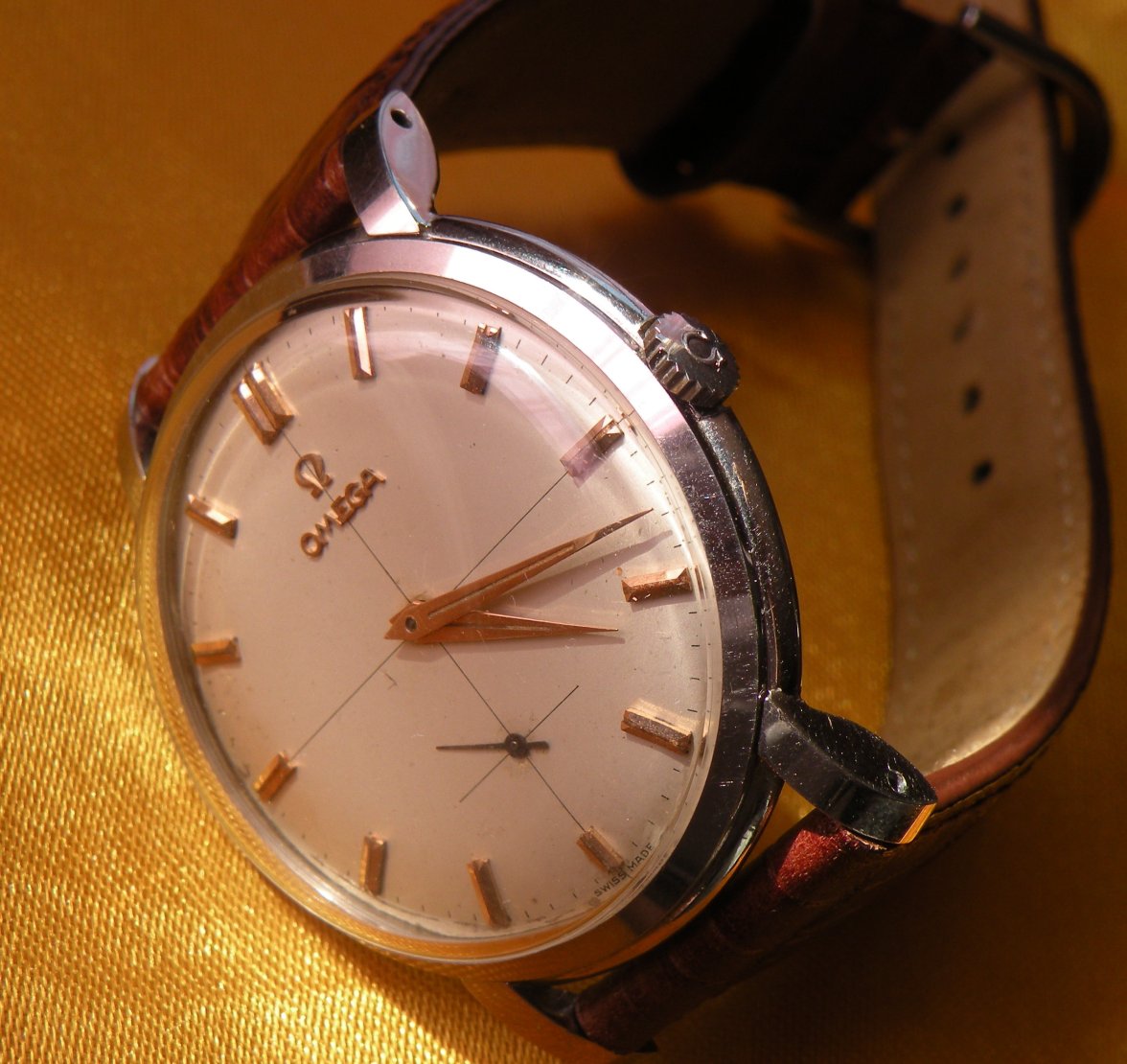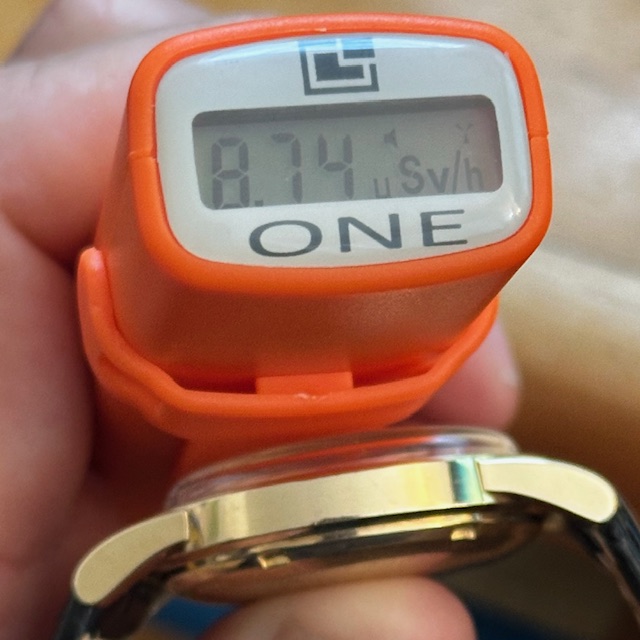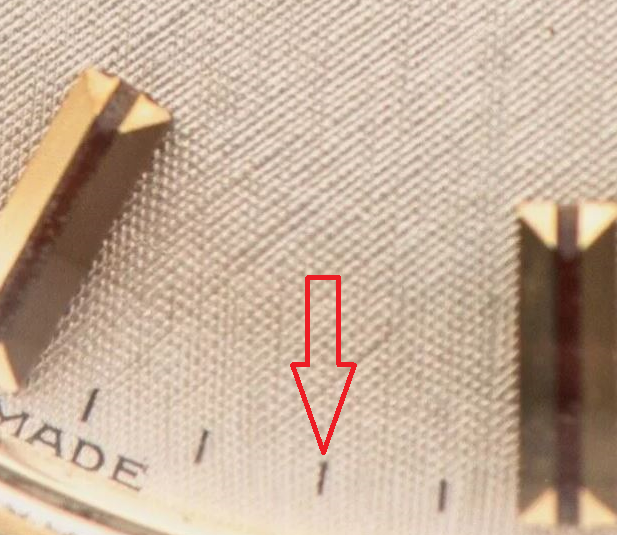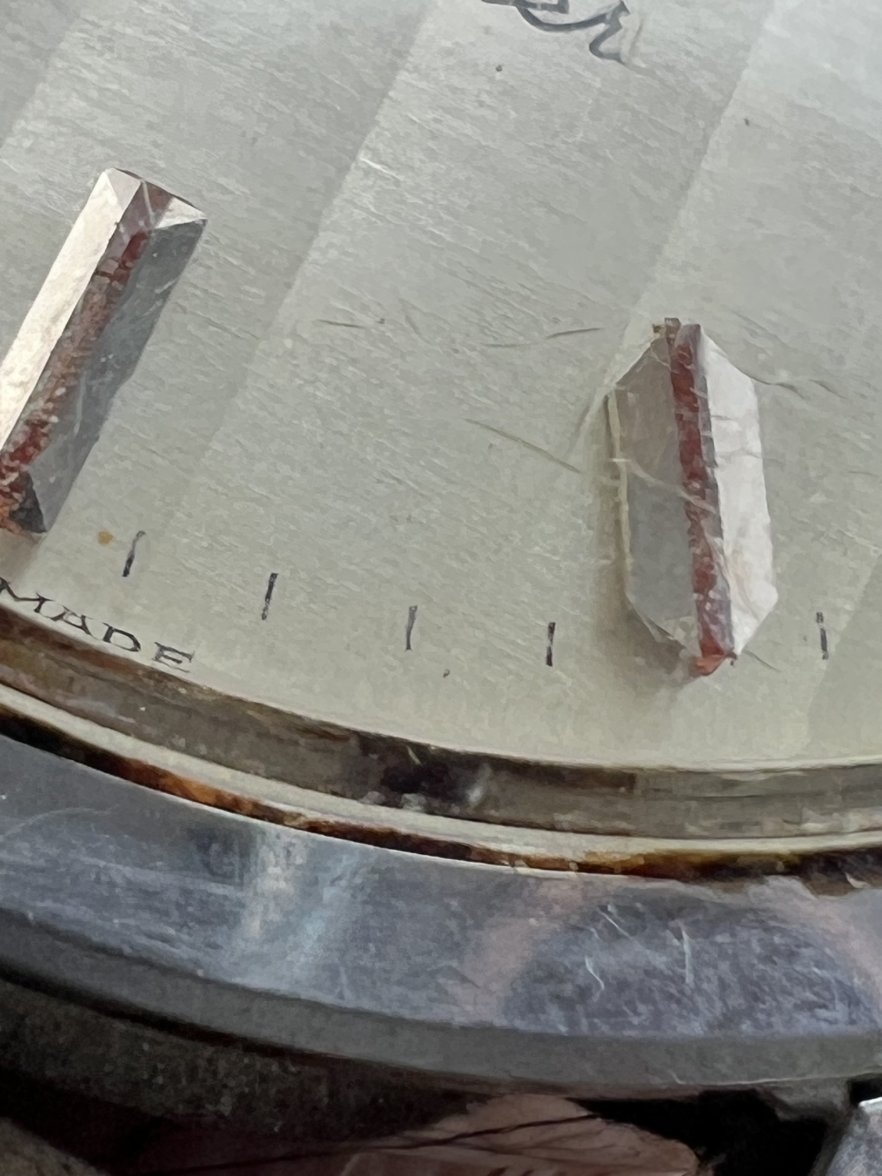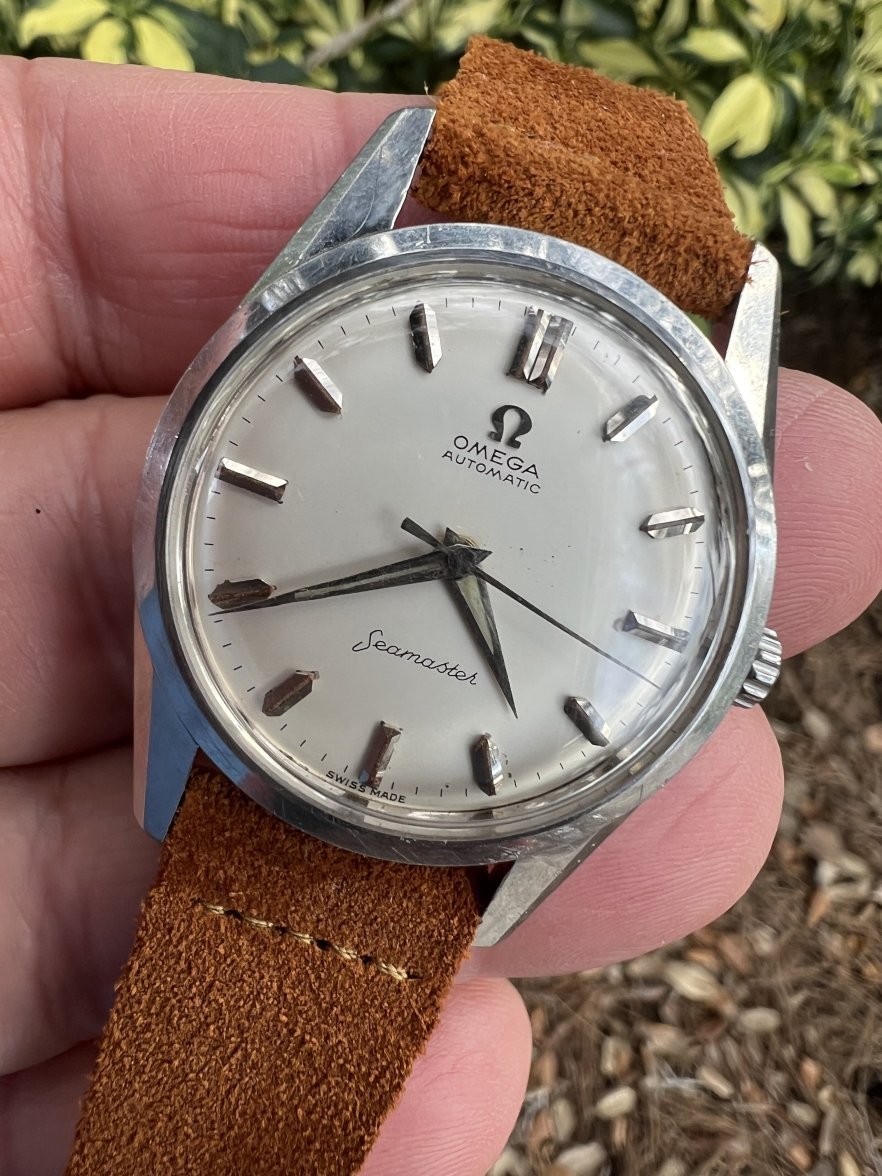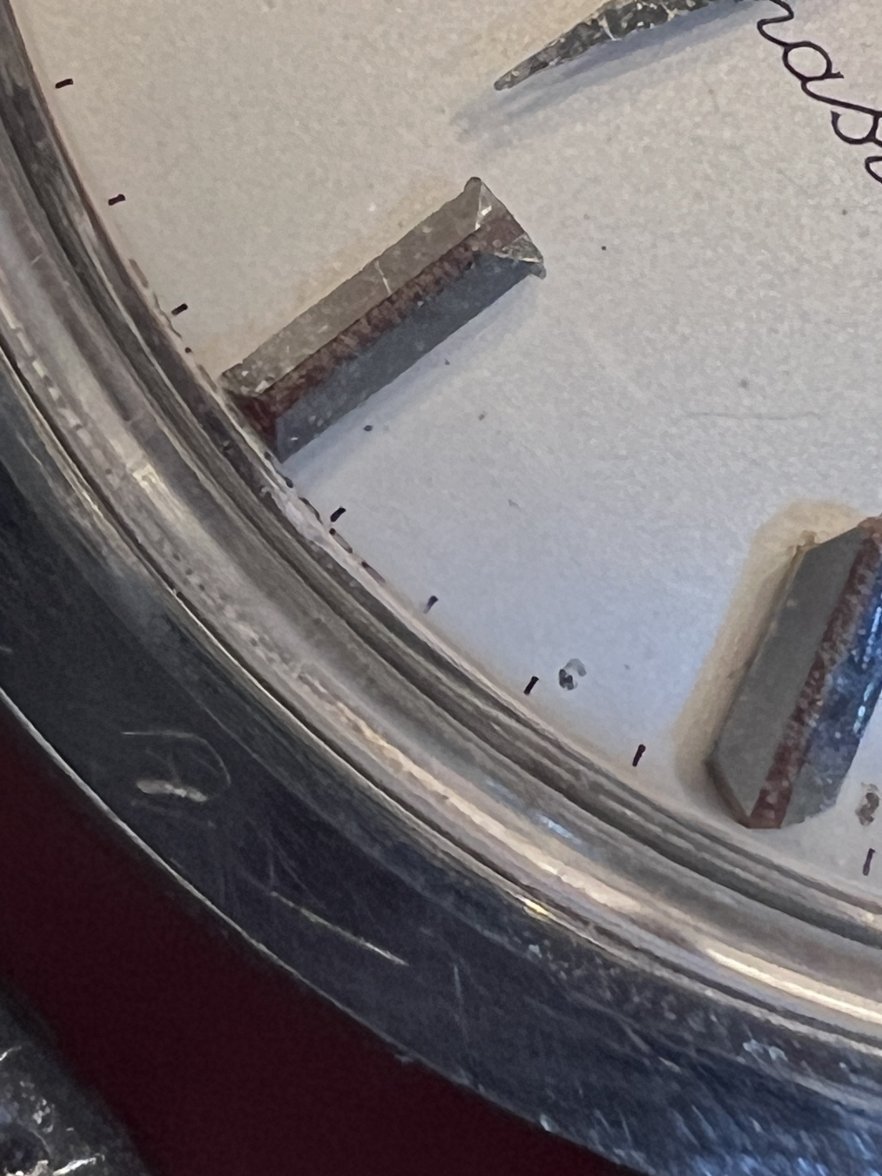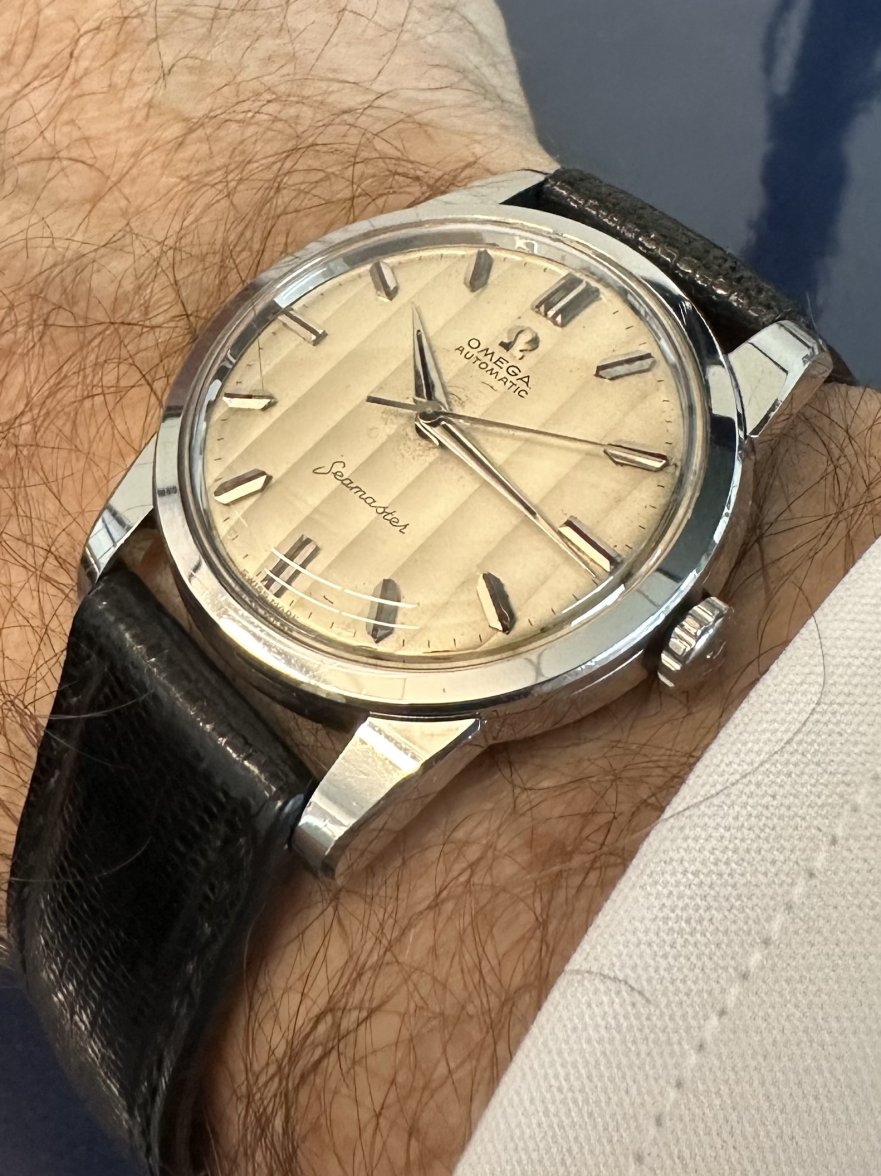Horologist
·I have noticed on many vintage seamasters with different styles of minute batons, some usually have a black marker or onyx centre piece. In particular especially amongst some of the earlier gold constellation models.
As I mentioned in a previous thread I was looking for a vintage seamaster possibly reference 165.009 or a 14761 and found one with minute markers as commenting above, However I noticed that it was a Matt brown colour as in the image. It is a 1961 Seamaster 14761 ! It is the first time I have noticed this! Has anyone ever seen this as it is a first for me?? I checked archives of this forum but found no topic on this ! Just curious
As I mentioned in a previous thread I was looking for a vintage seamaster possibly reference 165.009 or a 14761 and found one with minute markers as commenting above, However I noticed that it was a Matt brown colour as in the image. It is a 1961 Seamaster 14761 ! It is the first time I have noticed this! Has anyone ever seen this as it is a first for me?? I checked archives of this forum but found no topic on this ! Just curious


